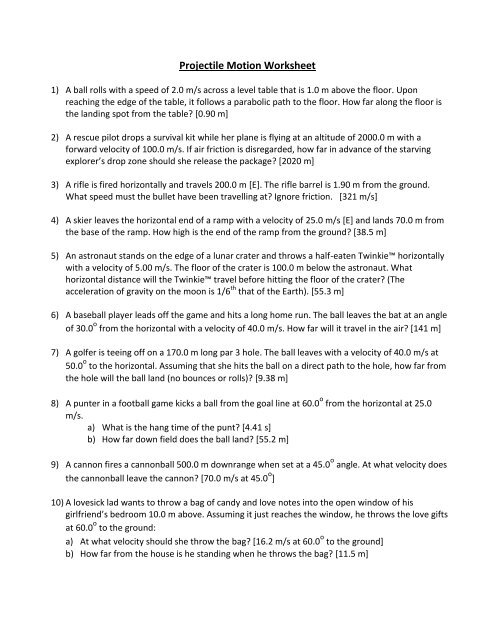

The more massive the object, the stronger its gravitational pull is. Every object exerts some gravitational pull on every object around it. Everyone knows how gravity works: it is the thing that keeps us on the ground down here and the moon in the sky up there. The second component that explains projectile motion is gravity. Changing direction, slowing down, and speeding up all involve a change in a state of motion, and so count as acceleration and require the application of some force. Think of it this way: An object in moving through deep space will continue moving in a straight line unless some force can push it around and change its state of motion. When an object is acted on with a non-zero force, it changes its state of motion. What makes an object change its state of motion? An object only changes its state of motion when acted upon by a force.

You car speeds up and slows down, you turn your body left to go around the corner, and baseballs eventually fall to the ground. Of course, we see things change their state of motion every day. Credit: M Run via WikiCommons CC BY-SA 4.0 Inertia carries the ball up the hill or keeps it moving in a straight line. The inertia of your body is why you feel yourself push into the seatbelt. When you slam on the brakes, the velocity of the car goes to 0, but your body continues in its state of motion. The inertia of an object is just the tendency for some object to “keep doing what it’s doing.” A ball traveling 4m/s to the left will remain traveling 4 m/s to the left, a block that is at rest at 0 m/s will remain at rest at 0 m/s.Īs you are driving your car, your body is moving at the same velocity as your car. The concept of inertia can be summarized by Newton’s first law of motion which states that an object at rest tends to stay at rest and an object in motion tends to stay in motion. Inertia is simply the tendency for a body to continue in a state of constant motion. Why does this happen? The answer is simple: inertia. As the car slows down, your body wants to continue to move and you lurch forward. A cat walks in front of you and you rapidly push the brakes. We will take a look at each of these components. The characteristic motion of projectiles can be explained by two things: inertia and gravity. Vertical distance = (initial vertical velocity)(time)−(½)(acceleration from gravity)(time) 2 Horizontal distance = (horizontal velocity) (time) Vertical velocity = (initial vertical velocity)−(acceleration)(time) Horizontal velocity = initial horizontal velocity The main equations of motion for a projectile with respect to time t are: Things like cannonballs, bullets, baseballs, and trebuchets are all subject to projectile motion. A projectile is a moving object that is solely under the influence of gravity. Why does the ball move the way it does? Why does it climb up an arc to some highest point and then fall back towards the ground? Why does its ascending motion slow down, and its descending motion speed up? In our example, the baseball is a projectile. What happens if you throw the ball at a 45-degree angle up from eye level? You will see the ball trace out an arc in the sky, slowing down before ascending to a highest point in its path, then falling back to the ground. The further the ball falls down, the faster it falls. The ball begins to slow its upward ascent before reaching the highest point of its movement after which it reverses direction and falls back towards the ground.

What happens? As you initially throw the baseball, it will gains some height. How far above or below its original level will the ball strike the opposite wall? 4) A plane traveling at 70 m/s drops a box of supplies.Grab a baseball and toss it straight up. The initial velocity of the ball is om's at an angle of 40° above the horizontal.

How far from the throwing point will the ball return to its original level? 3) A ball is thrown from the top of one building toward a tall building 15m away. How large must the distance x from plane to target be if a sack of flour released from the plane is to strike the target? 2) A baseball is thrown with an initial velocity of 100 m's at an angle of 30° above the horizontal. Transcribed image text: 2-D Kinematics and projectile motion practice problems Hints: Resolve the initial velocity vector into x and y components Horizontal and vertical components of displacement at any instant can be given by: Horizontal and vertical components of velocity at any instant can be given by: Solve horizontal and vertical components separately The final position and velocity can be obtained from their separate components 1) A stunt pilot is flying at 15 mis parallel to the flat ground 100m below.


 0 kommentar(er)
0 kommentar(er)
